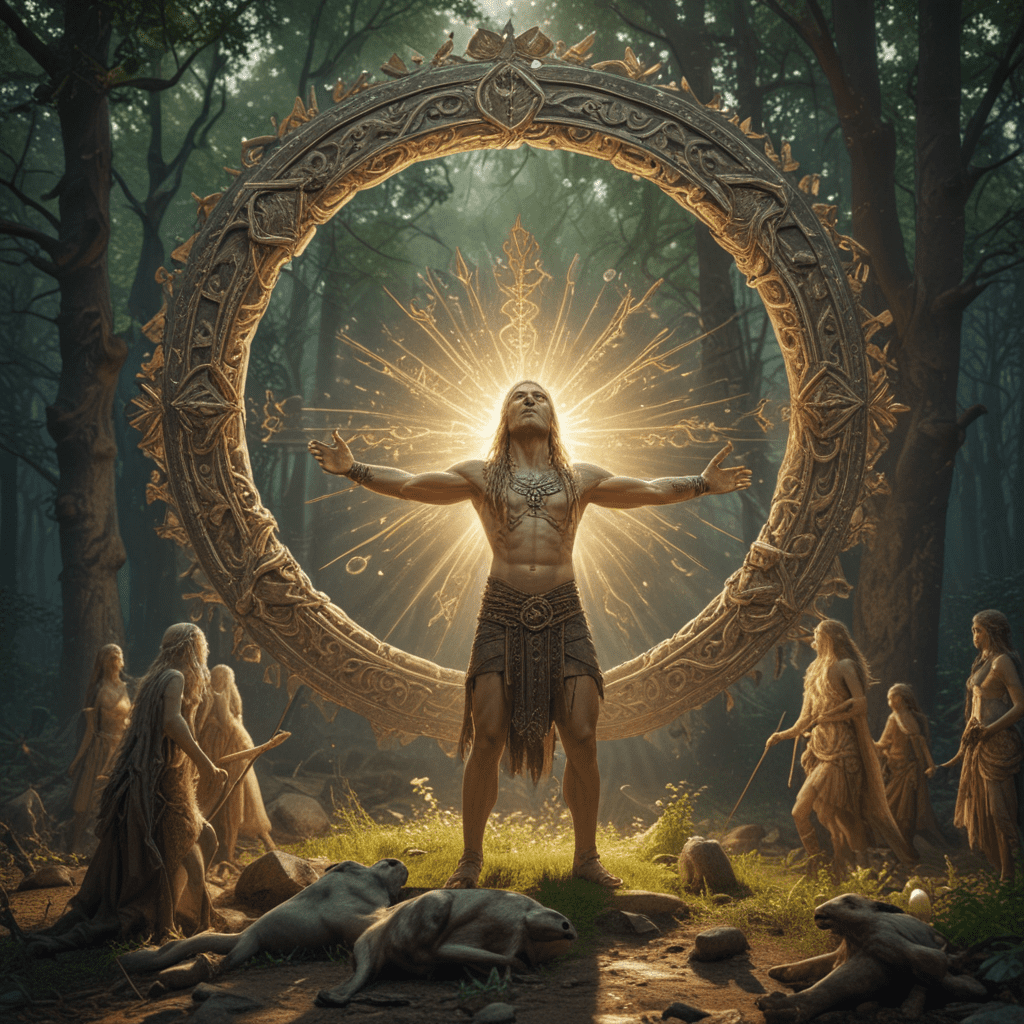The Concept of Renewal in Slavic Mythology
Renewal, rebirth, and regeneration hold a central place in Slavic mythology. The cyclical nature of life and the world permeated Slavic beliefs, with death and destruction often viewed as necessary precursors to new beginnings.
Seasonal Renewal: The Cycle of Death and Rebirth
The changing seasons played a significant role in Slavic renewal beliefs. Winter represented a time of dormancy and death, while spring heralded rebirth and new life. The arrival of spring was celebrated with festivals and rituals honoring the return of vitality and fertility.
Water as a Symbol of Renewal
Water held profound symbolism in Slavic mythology as an agent of renewal and purification. Rivers, lakes, and springs were believed to possess magical properties, capable of cleansing sins, healing illnesses, and restoring vitality. Bathing in natural bodies of water was often associated with rituals of renewal and rejuvenation.
Fire as a Purifying Force
Fire played a dual role in Slavic mythology: destruction and renewal. While uncontrolled fires could bring devastation, controlled and intentional burning was seen as a purifying force. Slavic people used fire to clear fields for agriculture, promote growth, and destroy impurities both physical and spiritual.
Cosmic Renewal: The World Egg and the End of Days
The World Egg is a prominent mythological motif representing cosmic renewal. Slavic legends depict the world as emerging from an egg that represents the potential for new beginnings and the cyclical nature of existence. The end of the world, too, was often seen as a rebirth, with the destruction of the old paving the way for the creation of a new and better realm.
Rituals of Renewal: Spring and Winter Solstices
Seasonal transitions, particularly the winter and spring solstices, marked important periods of renewal in Slavic mythology. The Winter Solstice, known as Kolyada, symbolized the rebirth of the sun and the triumph of light over darkness. Bonfires and feasts celebrated the arrival of longer days and new beginnings.
The Spring Equinox, celebrated as Maslenitsa, marked the return of spring and fertility. Festivities involved burning effigies of winter, dancing, and feasting to promote the abundance of the coming growing season.
The Role of Perun in Slavic Renewal Traditions
Perun, the Slavic god of thunder and lightning, played a significant role in renewal traditions. He was associated with the destructive and regenerative powers of storms. His lightning strikes were believed to clear the air, bringing rain and fertility, thus symbolizing both destruction and renewal.
Perun was invoked in rituals to protect crops and ensure successful harvests. His name resonates in the Slavic word for spring ("prolet"), further solidifying his connection to the cycle of death and rebirth.
Renewal in Slavic Folklore and Legends
Slavic folklore is replete with tales of renewal and rebirth. The phoenix-like bird of fire, known as the Zhar-bird, represented the eternal cycle of life, death, and resurrection. Its presence in a story often foreshadowed significant transformations and new beginnings.
Myths tell of heroes and deities who die and resurrect, embodying the themes of renewal and the triumph of life over death. These narratives reinforced the belief in the cyclical nature of existence and the potential for redemption and rejuvenation.
The Legacy of Renewal in Slavic Culture
The concept of renewal remains deeply embedded in Slavic culture today. Slavic communities continue to observe traditional seasonal festivals and rituals that celebrate the cycles of death and rebirth. Traditional folk art and crafts often incorporate motifs symbolizing renewal, such as the Zhar-bird and other symbols of new life.
Renewal, rebirth, and regeneration serve as foundational concepts that continue to shape the worldview and cultural expressions of Slavic peoples, reminding them of the eternal nature of existence and the promise of new beginnings.
FAQs
How did the Slavs view the end of the world?
Slavic mythology depicted the end of the world as a rebirth and a new beginning. The destruction of the old world made way for the creation of a new and better realm.
What is the significance of water in Slavic renewal traditions?
Water symbolized purity and regeneration in Slavic mythology. Bathing in rivers, lakes, and springs was seen as a way to cleanse impurities and promote physical and spiritual renewal.
What role did Perun play in Slavic mythology?
Perun, the god of thunder and lightning, represented both destructive and regenerative powers. He protected crops, ensured harvests, and was invoked in rituals of renewal to symbolize the transformative aspects of storms.
